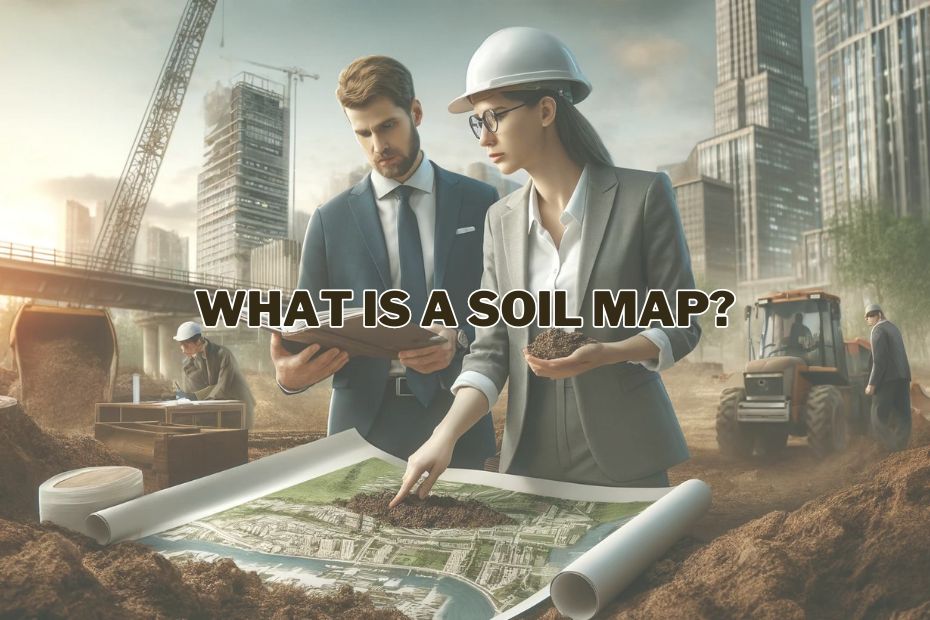When we delve into the layers beneath our feet, we uncover a narrative that is vital not only for agricultural pursuits but also for urban planning, environmental conservation, and even historical studies. This narrative is best told through a soil map, an essential tool that offers more than just a snapshot of our earth’s surface. But what exactly is a soil map? Let’s explore this fascinating tool, its uses, and why it holds significant importance in various fields.
A soil map is a specialized type of map that delineates the distribution and nature of soils within a designated area. These maps are essential for understanding soil variability and are used extensively in agriculture, environmental science, and urban planning. Each map segment, or polygon, represents a different soil type or series, characterized by its unique properties such as texture, structure, drainage capacity, and chemical composition.
Understanding Soil Mapping
What is Soil Mapping?
Soil mapping is the process of categorizing and plotting the different types of soil across a geographical area on a map. This process involves both field observations and laboratory measurements to accurately describe soil characteristics and their spatial distribution.
Components of a Soil Map
Soil maps are comprised of several key components that enhance their usefulness and accuracy:
- Legend: The legend of a soil map explains the symbols and colors used to differentiate soil types. For example, each color or pattern represents a specific soil series or classification see Legend on a Map.
- Scale: The scale indicates the proportion of map distance to actual ground distance, allowing users to interpret the map in real-world terms.
- Soil Profiles: Descriptions or images of soil profiles may be included to show the layers of soil as they appear in the ground vertically.
- Attribute Table: This table provides additional information about each soil type, such as depth, pH, organic content, and potential limitations for use.
- Base Map Information: Underlying geographical features such as roads, cities, rivers, and topography are often included to provide context and aid in navigation.
The History and Development of Soil Maps
Early Beginnings
The practice of soil mapping dates back to the 19th century when scientists began to recognize soil types and their impact on agriculture.
Advances in Technology
With the advent of remote sensing and GIS (Geographic Information Systems), soil mapping has become more precise and data-rich, allowing for more detailed and comprehensive soil maps.
Why Soil Maps are Important
Agriculture
Farmers rely on soil maps to choose the best crops for specific soil types, manage soil health, and maximize yield.
Urban Planning
City planners use soil maps to determine the suitability of land for development, assess flood risks, and manage other environmental concerns.
Environmental Conservation
Conservationists use soil maps to protect ecosystems, manage watersheds, and rehabilitate degraded lands.
Land Development
Urban planners and developers consult soil maps to assess land suitability for construction, identify potential risks like landslides or subsidence, and plan infrastructure projects accordingly.
Scientific Research
Researchers use soil maps to study soil evolution, classify soil types, and understand ecological dynamics across different landscapes.
How Soil Maps are Created
Field Surveys
Experts conduct field surveys to collect soil samples and observe soil properties directly.
Laboratory Analysis
Collected samples undergo various tests in laboratories to determine detailed soil characteristics.
Data Integration
Data from field and lab analyses are integrated using GIS to create detailed, accurate soil maps.
The Future of Soil Mapping
Technological Innovations
Emerging technologies like AI and machine learning are set to enhance the precision and usefulness of soil maps.
Global Impact
As climate change affects soil properties, updated and more frequent soil mapping will become crucial for sustainable land management worldwide.
Conclusion
A soil map is more than a simple depiction of soil types; it is a crucial tool for sustainable development, environmental protection, and agricultural productivity. By understanding and utilizing the information provided by soil maps, we can make informed decisions that impact our natural world and our future.
FAQs: What is a Soil Map?
What is the most common use of a soil map?
The most common use of a soil map is in agriculture, where it helps farmers decide on crop selection and soil management practices.
How often should soil maps be updated?
Soil maps should be updated periodically, especially as environmental conditions and land use change.
Can soil maps affect real estate values?
Yes, soil maps can significantly impact real estate values by indicating land suitability for various types of development.
Are soil maps useful in combating climate change?
Yes, soil maps play a crucial role in managing agricultural practices and land use in ways that can mitigate the impacts of climate change.
What technologies are improving soil mapping accuracy?
Technologies such as remote sensing, GIS, AI, and machine learning are all contributing to greater accuracy in soil mapping.
